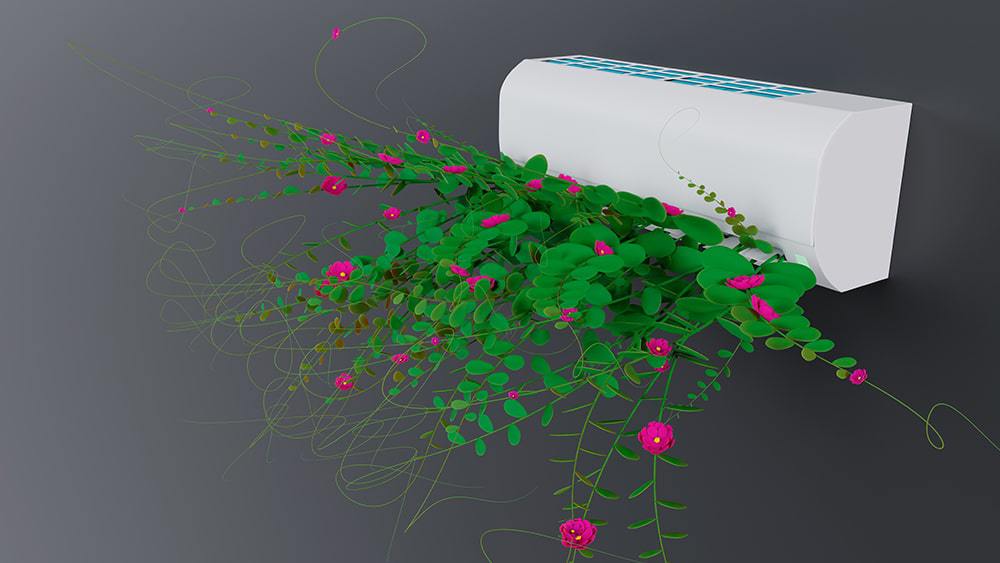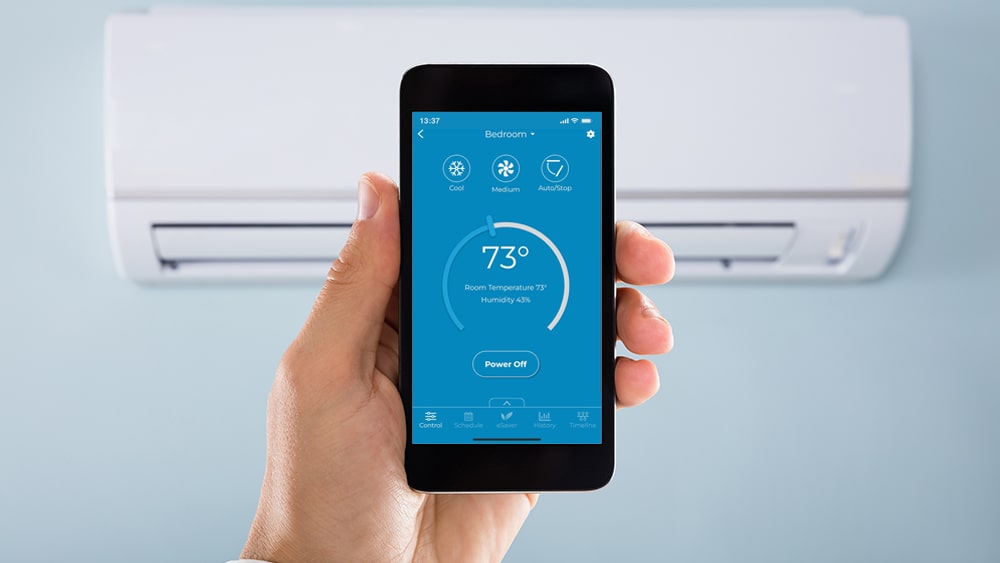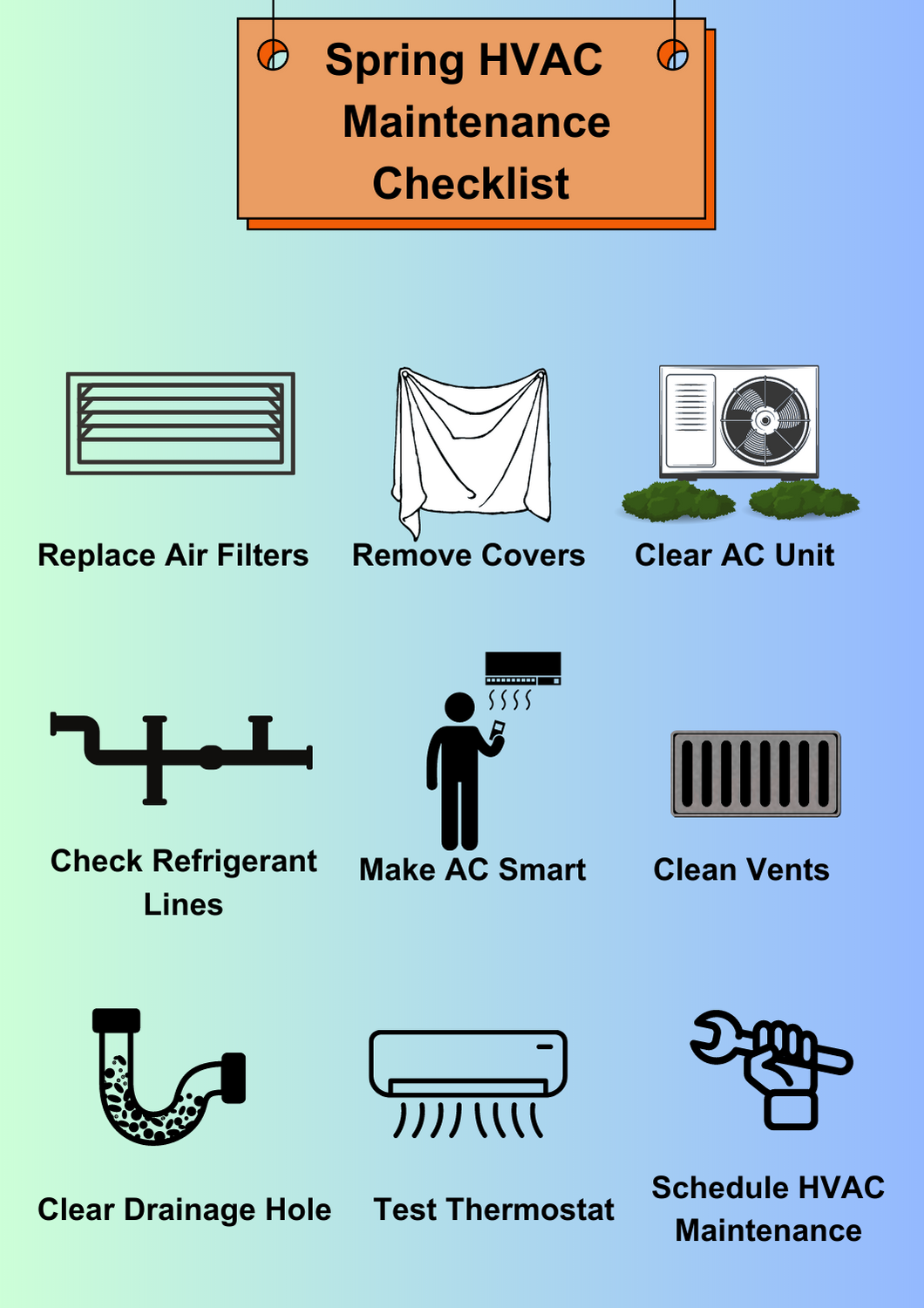
Key Takeaways
- Cleaning or replacing air filters should be at the top of your spring HVAC maintenance checklist.
- Spring HVAC maintenance ensures energy efficiency and comfort throughout the warmer months.
- A professional check-up during spring helps to catch issues early on and ensures smooth operation during peak cooling demand.
The arrival of spring is the perfect time for homeowners to get their HVAC systems in shape. For many, it might have been months since you’ve given your cooling system a thought – but with the nice weather comes persistent sunshine and rising temperatures that will eventually bring on summer heat. Fortunately, by taking simple HVAC spring maintenance steps now, you can keep your unit running optimally all year long — with much less stress!
9-Point Spring HVAC Maintenance List
In this blog post, we’ll dive into the essential AC maintenance tasks you must complete to get the most out of your home’s HVAC system this season. From changing air filters to inspecting ductwork and checking refrigerant levels, you can take several proactive measures so you don’t end up sidelined by costly repairs down the road. If you’re ready to tackle some HVAC challenges while ensuring maximum efficiency from your unit this spring, let’s get started!
1. Replace Air Filters
AC filters are one essential component of your unit that needs frequent attention. They tend to get clogged and dirty easily and directly impact the performance and effectiveness of your air conditioner. If not cleaned promptly, a dirty filter can cause restricted airflow, energy wastage, and damage to your unit.
Hence, your HVAC spring maintenance must start with a thorough filter cleaning session. There are different types of filters; the usable ones can easily be taken out and washed with water. However, if the filters seem worn out, it is a good time to replace them.
A rule of thumb is to clean the filters every two weeks and get a replacement bimonthly during summer when the usage is high. Consider investing in a smart AC controller if you want to take your spring maintenance game up a notch. Some advanced models like Cielo Breez will help you automatically get notified when your filters need cleaning. This is not only crucial for increasing the lifespan of your AC but also helps to improve indoor air quality.
2. Remove Unit Covers

If you have mastered the art of storing away your AC units in winter, they should be covered away from all the potential external threats. But now is the time to take them off! Although it might seem obvious, many people make the mistake of turning on their HVAC systems without doing so. A simple mistake like this will compromise the efficiency of your AC and can cause damage due to overheating.
3. Clean Around AC Unit
If you had covers on, this step would become a whole lot easier. However, if your unit was uncovered, there would definitely be debris and dirt buildup that will need clearing up. In addition, birds often like to make their nests in the units, especially when unused.
Inspect carefully to identify any source of concern. Start by cleaning any leaves gathered around and on the top of your air conditioner’s grill. Follow up by trimming nearby bushes and shrubs while ensuring there is at least two feet of cleared land around the unit for proper functioning.
If you find any potential damages that need repairs, get in touch with an HVAC technician asap!
4. Check Air Conditioner Refrigerant Lines
When checking these lines, look for any signs of damage, such as leaks or cracks in the pipes. They can cause refrigerant leakage, leading to a decrease in cooling efficiency. If you notice any damage to the refrigerant lines, it’s important to have them repaired or replaced by a professional HVAC technician as soon as possible.
Adjust the refrigerant levels according to your system. Too much or too little refrigerant will reduce the efficiency of your equipment and increase your energy costs. Check the refrigerant lines to be sure they are not worn, detached, or leaking. For the best results, call an HVAC professional!
5. Testing the Thermostat
Testing, calibrating, and leveling your thermostat is important to ensure perfect home temperature. Here are a few things you need to monitor:
- Check for loose connections: Look for any loose wires or connections inside the thermostat. Tighten any loose connections using a screwdriver.
- Test the temperature sensor: Using a thermometer, check the temperature reading on your thermostat. If the reading is off by a few degrees, you may need to recalibrate the thermostat.
- Calibrate the thermostat: Refer to the manufacturer’s instructions on how to calibrate your thermostat. Typically, you will need to adjust the temperature using a small screwdriver until the reading matches the actual room temperature.
- Level the thermostat: Use a level to ensure that your thermostat is level. If it is not level, adjust the mounting bracket until it is.
Once you have finished testing, calibrating, and leveling your thermostat, replace the cover and turn the power back on to your heating and cooling system.
Related: A Complete Guide to Finding the Perfect Thermostat Settings for Your Home
6. Make Your AC Smart

This summer is the perfect time to change up your old ways and become more efficient regarding energy usage. The bills are higher than ever, but you should mend your ways to be more responsible and sustainable. According to studies, 90% of Americans have some sort of air conditioning.
In addition, heating and cooling make up almost 50% of the energy consumption expenses. Hence, it is only logical to take control of the situation and add smart air conditioning controls to the list of your HVAC spring maintenance.
Your best choice to make any mini-split, window,
or portable AC smart. Enhance your comfort and savings.

One of the most cost-effective methods is to use a smart thermostat for central AC and a smart thermostat for mini-splits. You can benefit from multiple next-gen features like smart scheduling, geofencing, Comfy Mode, and more. With these, you can ensure that your AC runs only when it needs to, turns off automatically if you ever forget to switch it off in a rush, and even takes away the hassle of manually adjusting the settings all day.
Related: All You Need to Know About Smart Air Conditioning
7. Clearing the Drainage Hole
This is an integral part of the HVAC summer maintenance routine. The drainage hole or condensate drain is responsible for removing excess moisture. If this drainage hole becomes clogged, you might encounter various issues like water leaking from inside the unit and other types of water damage.
When cleaning out the drainage hole, turn off your HVAC unit. It should be located near the base of the indoor unit. Sometimes it is visible as a small hole, while it can be covered at other times. You can use a pipe cleaner or a small brush to remove any buildup. Remember to always use a gentle hand and avoid pressure to prevent damage.
Next, check drainage pans and clean them with a damp cloth if they are dirty.Test the drainage by turning the HVAC system on and checking if the water flows freely through the system.
Related: Where Are the Drain Holes on Your Window Air Conditioner? Locate & Unclog Them
8. Cleaning the Vents
Cleaning the vents is an important part of HVAC spring maintenance as it helps to ensure proper airflow and efficiency. Over time, the vents of an AC can accumulate dust, dirt, and debris, reducing the air quality in your home. By cleaning the vents, you can remove these contaminants and improve indoor air quality.
Furthermore, it prevents mold growth. Moisture can accumulate in the vents, promoting mold and mildew growth. By cleaning the vents regularly, you can remove any moisture and prevent mold growth.
Related: Mold in Air Ducts: Causes, Symptoms, Cleaning, Prevention
9. Schedule HVAC Spring Maintenance Appointment
Spring is considered the best time to call an HVAC technician for maintenance because it is the season right before the peak summer months; here is why:
- Prepare for summer: The summer months can be tough on HVAC systems, as they often work overtime to keep homes cool. By scheduling maintenance in the spring, you can identify and address any potential issues before the high demand of summer arrives.
- Cost-effective: Calling a technician during peak time means paying more to solve your AC-related problems. HVAC spring maintenance will save you a few coins and prepare you ahead of time.
- Availability of technicians: HVAC technicians are often busiest during the peak summer months, so scheduling a maintenance appointment may be more difficult. By calling in the spring, you may have options for scheduling and can avoid potential wait times or delays.
Scheduling HVAC spring maintenance can help you avoid potential breakdowns, improve efficiency, and ensure your system is ready to handle summer demands.
Spring HVAC Maintenance Checklist

Summer is Just Around the Corner – Are You Ready?
Spring is the perfect time to ensure your HVAC system is in good condition for the rest of the year. Investing in regular maintenance now will prevent you from facing expensive and inconvenient repairs later on. Not only can professional spring HVAC maintenance save you money, but it can also help improve the air quality inside your home, ensuring that your family stays healthy and comfortable all year long. Follow the checklist above and be sorted for a pleasant summer ahead.








